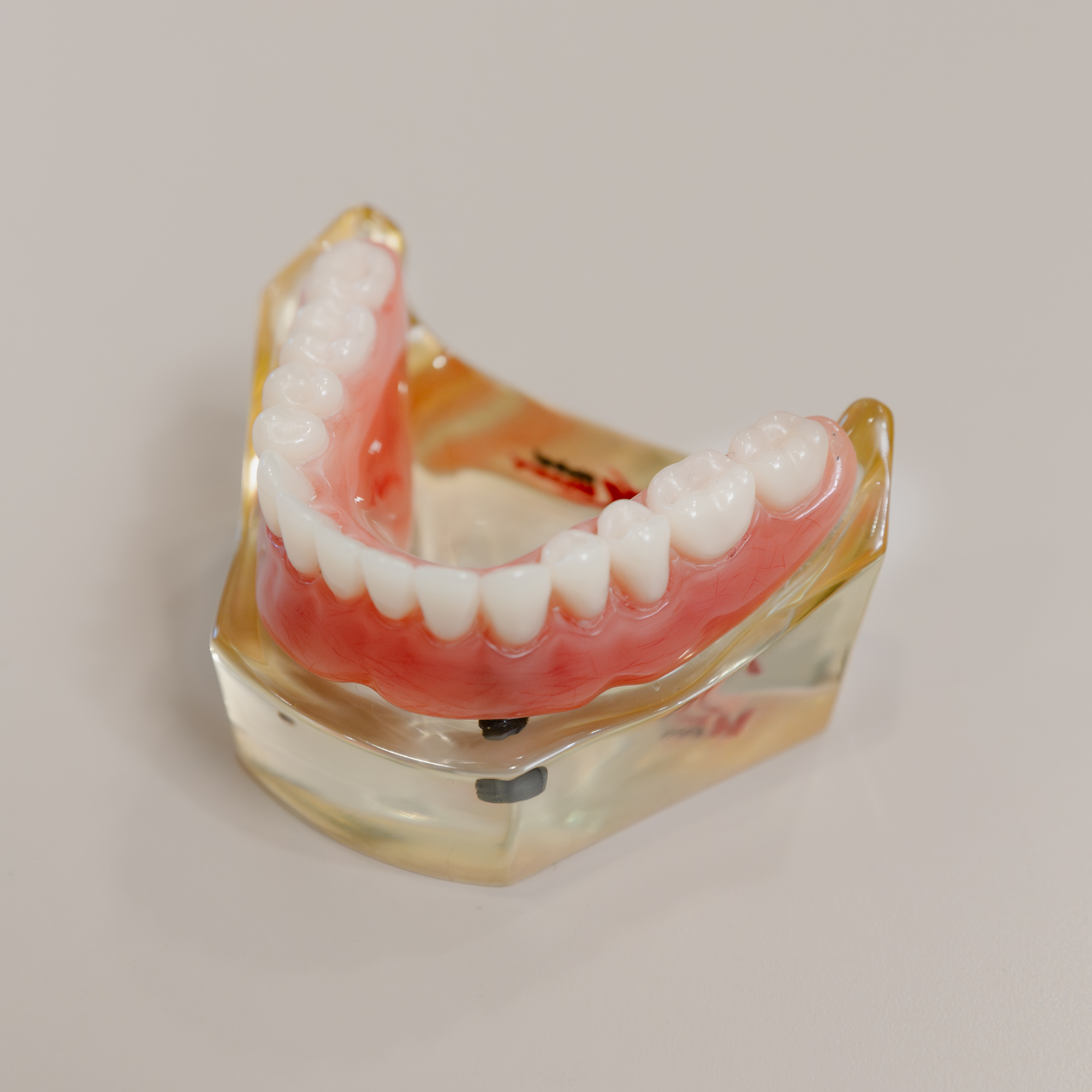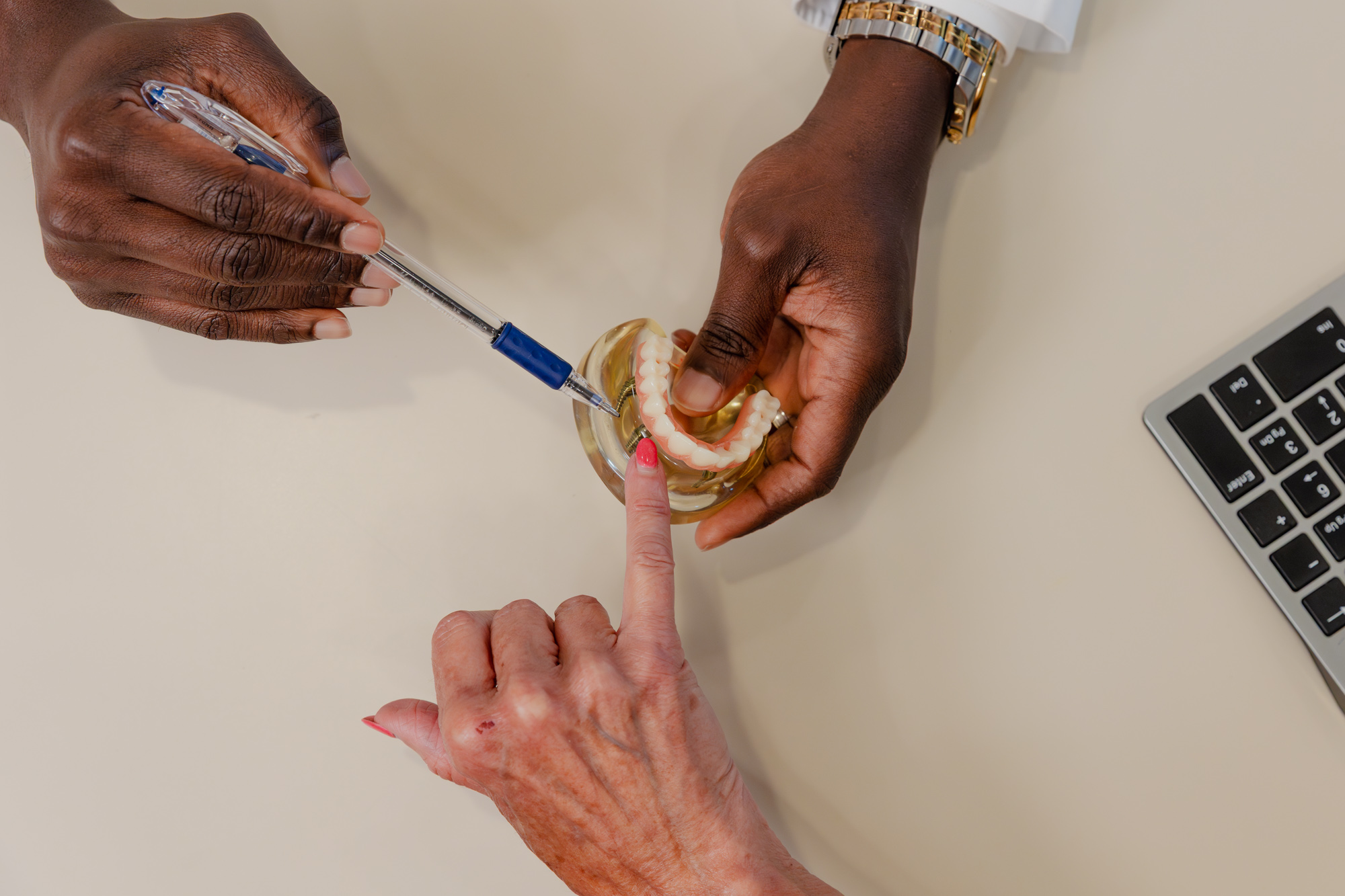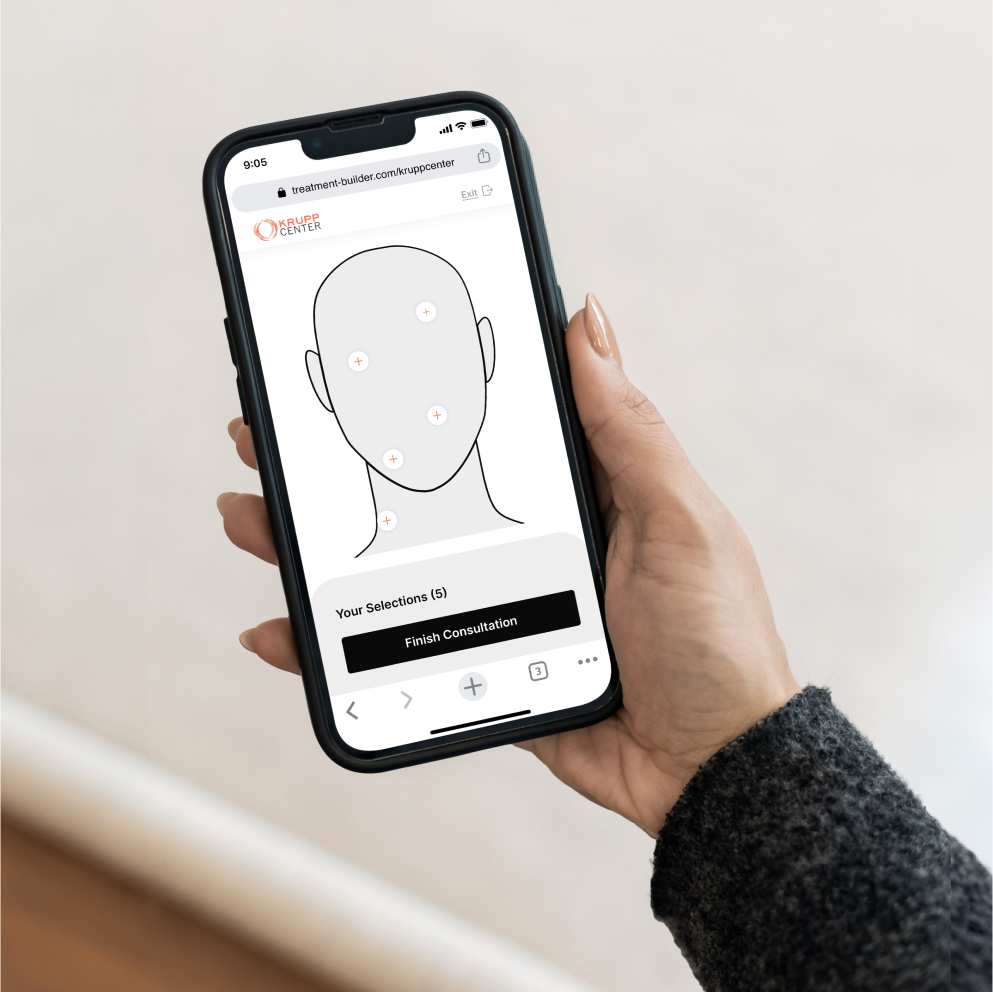
Missing teeth can make even the simplest of moments—like smiling, eating, or speaking—feel uncomfortable. It’s not just about the gap in your grin, it’s about the impact this gap has on your confidence and your quality of life.
If you’re hiding your smile because of missing teeth, you’re not alone. Thankfully, there are effective solutions available that help you restore your smile. When choosing between dental implants and bridges, it can feel overwhelming. Both options replace missing teeth, but they differ with your overall oral health benefits.
At Krupp Center, we’re here to help you find the best solution for your unique dental needs. Having an experienced dentist near Hampton, MD, by your side when determining the best solution for your missing teeth can make all the difference in getting your smile back.
If you’re deciding between dental implants and bridges, read on to learn more about the oral health implications of both teeth replacement methods!
What Are Dental Implants?
Dental implants are surgical-grade titanium screws that are implanted into the jawbone to help replace missing teeth. They provide a stable and permanent foundation for artificial teeth. The screws work as the “root” of the new, artificial tooth, providing complete support.
Unlike dentures—which sit on top of your gums and are removable—dental implants are a permanent solution, with replacement teeth being attached to the titanium screws. This means no more denture shifting, and no more messy adhesives on the roof of your mouth.
Some benefits of undergoing dental implant placement with an experienced and certified dentist near Hampton, MD, include:
- Restored chewing function
- Improved appearance and smile
- Prevention of bone deterioration
- Long-term, durable solution for tooth replacement
What the Dental Implant Process Looks Like
Understanding the complete dental implant process at Krupp Center can help you feel more confident in your decision to reclaim your smile. Unlike other tooth replacements, dental implants look, feel, and function like natural teeth.
The process of getting dental implants has a few steps, including an initial consultation all the way to your final dental implant procedure. Here’s what to expect with dental implants.
The Consultation and Planning
The first step you take when getting dental implants is a curated consultation with a dentist near Hampton, MD. During this time, we will take X-rays, assess your jawbone, and determine if dental implants are the right option for you and your oral health needs.
Dental implants need good bone in order to work effectively and safely. At Krupp Center, we use the highly advanced Smart Dentin Grinder that allows for autogenous grafts to be done in the office.

Using this, we can craft dentin grafts from extracted teeth, producing bacteria-free particulate dentine that your oral surgeon can use to reinforce bone that may not be strong enough to support dental implants on its own.
Surgical Implant Placement
The surgical implant placement may differ slightly from patient to patient. However, the procedure will always involve a local anesthetic at a minimum.
It is important to have someone available to drop you off and take you home after your implanting process—especially if you choose an IV or oral sedation.
The dental implant procedure and restoration has three components:
- Dental Implant (screw)
- Restoration, Abutment
- Restoration, Crown
Dental implants provide the look, feel, and function of natural teeth, unlike other replacements.
The dental implant is placed in the jawbone by making an access space for the implant to be inserted and becomes one with your bone after a three to four-month integration period.
This process is called “osseointegration.”
Essentially, the implant and the bone become securely attached to one another.
Once you heal, the dentist can place the “abutment”. At this time, your dentist near Hampton, MD, will take impressions of your teeth needed to fit your future crowns.
Finally, you will receive your new crowns. You will have time for a last fitting that ensures that these crowns fit perfectly, and feel completely comfortable and natural.
What Are Dental Bridges?
A dental bridge replaces the missing tooth (or teeth) by attaching an artificial tooth to your natural teeth on either side of the gap. This bridges the gap, restoring chewing function and your smile’s appearance.
It is important to note that when installing a dental bridge, the adjacent, healthy teeth need to be ground down to support the bridge. This can place new, additional strain on the natural teeth that are supporting the artificial teeth through the bridge.
There is no surgery required for this method, but dental brides have to be replaced every 5 to 7 years, depending on the natural wear of the artificial teeth and the bridge.
What the Bridge Process Looks Like
Just like with dental implants, it’s important to understand what the process for a bridge looks like from start to finish. This can help you make an informed decision for your oral health.
The Consultation
All dental procedures, including bridges, start with a consultation. This will allow a dentist near Hampton, MD, to examine your teeth, take X-rays, and discuss your treatment options. Depending on how many teeth you are needing replaced, a dental bridge may not be your best treatment option.
The Dental Bridge Placement
One of the key steps in bridge placement is preparing the teeth adjacent to the missing teeth (also known as the abutment teeth) for bridge placement. This includes filing and removing a small amount of enamel on the healthy teeth.
Your oral health expert will then take impressions of your teeth and the bridge placement area. The dental lab receives these impressions to fabricate the final bridge. At this time, you receive a temporary bridge to protect the abutment teeth while waiting for your permanent bridge.
Once the final bridge is ready, your temporary bridge is removed, and the permanent bridge is carefully installed.

Which Treatment Is Right for You?
Dental implants and bridges can both potentially deliver natural-looking results when placed by experienced professionals. During a consultation, a member of our team can better assess which procedure aligns with your goals and your oral health.
At Krupp Center, we recommend dental implants for patients because of the tremendous benefits they can enjoy after their procedure. Some of these benefits include:
Long-Term Durability & Stability
Dental implants, when properly cared for, can last for decades, often even a lifetime. This makes them one of the longest-lasting options available on the market. The goal of choosing a dental procedure is a near-permanent solution for missing teeth.
Along with that, dental implants are extremely resilient. They will not decay. This offers a more durable option compared to bridges, which often need replacing every 5 to 7 years.
Better for Bone Health Preservation
Because dental implants mimic the natural root of a tooth, they help to prevent jawbone shrinkage that often occurs with missing teeth.
Jawbone shrinkage is extremely detrimental to your facial structure and can also collapse your remaining natural teeth if not addressed properly in a timely manner.
The implant process, when you receive dental implants, often stimulates bone growth, helping to maintain the strength and integrity of your jawbone in a way that dental bridges cannot.
High Success Rate
Dental implants have a proven track record with up to a 97% success rate after installation. This procedure is one of the most reliable dental treatments available on the market to date.
During the dental implant installation process, none of the natural, healthy teeth need to be changed in order for the implant to work effectively. When installing bridges, some of your natural teeth will need to be filed and drilled down, which can cause damage to healthy teeth around your missing tooth (or teeth).
Dental implants are a dependable choice for improving your long-term oral health and rebuilding your confidence after unavoidable teeth loss.
Natural Appearance, Comfortable Fit
Dental implants are nearly unnoticeable within the smile and are designed to function just as natural teeth would. Bridges can occasionally appear more visible within the smile, and can appear less natural as they age.
Along with a completely seamless appearance, dental implants are designed to fit comfortably alongside your natural teeth, and are completely stable once placed. Patients often find that the implants have a comfortable bite, and that their new teeth have a strikingly similar texture to their natural teeth.
If you want a more in-depth look at all the benefits you can expect from dental implant surgery, check out our benefit guide on cosmetic dentistry near Timonium for more information.

Transform Your Smile With the Right Solution
If you’re looking for long-lasting, natural solutions for missing teeth, dental implants are often the best treatment option. If you’re ready to explore the treatments available at the Krupp Center and restore your smile, consult with a trusted dentist near Hampton, MD.
Contact us now to schedule your first appointment and consultation. Our team is dedicated to helping you take the first step toward a healthier, more beautiful smile.


